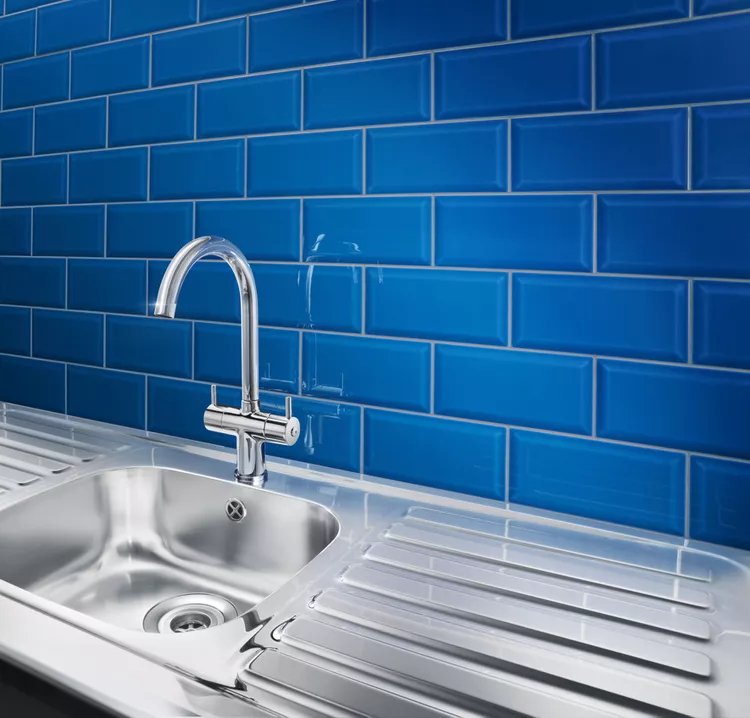
Shabby or outdated tile in the bathroom or kitchen might seem like a permanent condition, but it doesn't have to be this way. If your tile isn't as clean and pristine as you'd like but it's still in good condition, it might be a candidate for tile reglazing. The process of reglazing tile in place is much like painting a wall, except a special type of two-part glazing product is used.
What Tile Reglazing Is
While the word reglaze, derived from glass, implies a re-application of the tile's original glass-like surface, this is not how glazing is done for tile in place.
In the factory, the tile is treated with a mixture of dyes and a glass product called frit. The tile is fired for many hours in kilns at temperatures up to 2,500°F.1 This is impossible to do when the tile is in place.
Reglazing tile in place involves painting the tile and grout with a two-part liquid epoxy acrylic that looks and behaves like ceramic. Specially designed for tile, its high-gloss surface resists abrasion, scratching, and mold.
Considered to be self-leveling, brush-on tile reglazing product is thick and heavy enough to smooth out most brush marks. Still, overworking can leave streaks. Brush-on tile reglaze can be applied with a brush or with a roller
While not as strong as the original glaze, it's quite impact-resistant, and it retains color over time.
- Tile doesn't need to be removed
- Relatively inexpensive
- Can be done by yourself
- Covers grout, as well
- Reglaze not as tough as original glaze
- Difficult to achieve perfectly smooth surface
When to Reglaze Tile
Reglaze your tile while the tile is still in good physical condition. If the tile has become cracked, chipped, heavily worn, or several individual tiles are missing, the tile is usually past the point of reglazing. In this case, the tile should be removed and replaced.
Use when the temperature is between 50 to 90ºF. Humidity must not exceed 85 percent. Excessive humidity will not allow the reglazing product to properly dry.
Safety Considerations
Brush-on tile reglazing product is an eye irritant and a category 2 carcinogen2 (a suspected human carcinogen, though evidence is limited). Wear protective latex or latex-substitute gloves and eye or face protection. As the product can cause headaches, drowsiness, and nausea, use only in well-ventilated areas.2


I don’t think so
Thoroughly clean the tiles using a tile cleaner to remove any dirt, grease, or soap scum.
Reglazing tile is a fantastic way to breathe new life into tired, outdated spaces without the expense of a full renovation. This article provides clear, step-by-step instructions on how to tackle this DIY project effectively. I appreciate the detailed tips on preparation, application, and finishing touches, ensuring a professional-looking result. With proper care and attention, reglazing tile can transform any room and add value to your home.
Reglazing tile can be a game-changer for homeowners looking to update their bathrooms or kitchens on a budget. This guide offers practical advice and insider tips to help DIY enthusiasts achieve professional-quality results. I find the troubleshooting section particularly helpful, as it addresses common issues that may arise during the reglazing process. With patience and precision, anyone can revitalize their tile surfaces and enjoy a fresh, modern look without breaking the bank.
I’m impressed by the comprehensive approach taken in this article to demystify the reglazing process. The detailed explanations and accompanying visuals make it easy for readers to follow along and tackle this project with confidence. I appreciate the emphasis on safety precautions and proper ventilation, ensuring a safe working environment. With the right tools and techniques, reglazing tile can be a rewarding DIY endeavor that transforms dull spaces into vibrant, stylish rooms.
Learning how to reglaze tile can breathe new life into your bathroom or kitchen, offering a cost-effective solution for a fresh look.